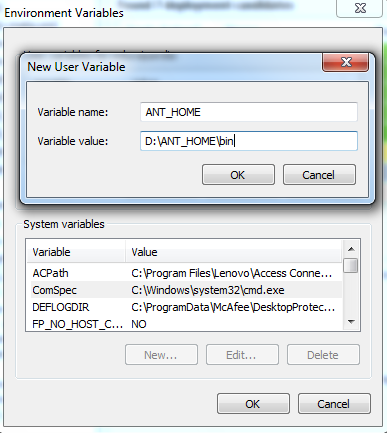

- #Ant migration tool documentation how to
- #Ant migration tool documentation install
- #Ant migration tool documentation upgrade
- #Ant migration tool documentation code
#Ant migration tool documentation install
In a command prompt window, run the following command to install the tool: Run the binary scanner to find Java 11 issuesĭownload the Migration Toolkit for Application Binaries. This tutorial focuses on the binary scanner since it’s the first step to preparing your applications for migration.

#Ant migration tool documentation how to
Here is a video on how to use the source scanner to migrate to Java 11.
#Ant migration tool documentation code
The source scanner tool is useful when you determine that you need to make source code changes in your application because it lets you navigate to the exact line of code that needs to be addressed. If you’re using Eclipse, there is also a source scanner version of the tool that will inspect your source code and flag the same issues that the binary scanner looks for. war file) and produce a report highlighting any potential Java 11 issues it finds in your application. This tool will scan your application binaries (your. I recommend that you start with the Migration Toolkit for Application Binaries. So, how do you know if your application is using any of those removed packages? How do you know which Liberty features to enable? What about the other changes that Java 11 introduced? How do you deal with those? That’s where the tool can help. All you’ll need to do for the missing Java EE packages is add the right feature to your server.xml, and your app will work again. The good news is that the Liberty team did a lot of work to make the removed Java EE modules available when you migrate to Java 11 on the Liberty application server (Open Liberty and WebSphere Liberty). This means that if your application is using any classes that were in any of those modules (classes in javax.jws., ., etc), those applications won’t run on Java 11 because they can’t access those classes. One of the biggest obstacles application developers will run into when migrating to Java 11 is the removal of the Java EE modules from the JDK. This tutorial highlights the tool features that are interesting from a Java 11 perspective but if you want more information about the other scenarios, there are lots of resources available on the tool’s download page. You may be asking, “What happened to Java 9 and 10?” Well, with Java 9 and 10, Oracle had announced that those versions only have short-term support (six months), and we figured that most developers would go through the big migration effort with a long-term supported release, which is Java 11. Now, we have support for migrating from Java 8 to Java 11. We previously added migration rules that flag issues when migrating from Java 6 to Java 7 and Java 7 to Java 8.
#Ant migration tool documentation upgrade
One scenario that we’ve added support for over the years is helping developers upgrade to newer Java SE levels.

The Migration Toolkit for Application Binaries has been around for years to help developers migrate from various Java SE and application server environments, both on-premises and in the cloud. About the Migration Toolkit for Application Binaries Introductionĭo you have an application running on Java 8 (or even Java 7) and are wondering how much work it will take to get the application working on Java 11? The Migration Toolkit for Application Binaries is here to help! The tool can scan your applications for any potential issues you might run into when you move to Java 11. See the “ Notes” section for more information.

The Migration Toolkit for Application Binaries now supports migrating to Java 14. Updated Septem| Published February 26, 2019


 0 kommentar(er)
0 kommentar(er)
